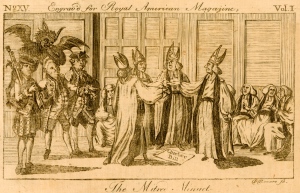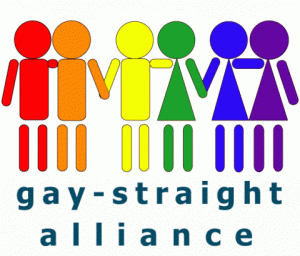In Canadian law, enshrined in the Constitution Act and in federal statutes, Northwest Territories Act, the Yukon Act and the Nunavut Act, what is known as separate school boards are allowed to operate along side the public school boards. The law allows for separate school boards to accommodate members of the Christian faith, either Catholic or Protestant, where their numbers make them a minority–this right does not apply to faiths outside Christianity–in the provinces of Alberta, Ontario and Saskatchewan and in the Northwest Territories, Yukon and Nunavut. In practice, most separate school boards serve Catholic populations. Both public and separate school boards are funded by provincial an territorial governments respectively and are subject to legislation governing curriculum. While there are separate, that is Catholic, school boards in these provinces and territories, they operate under the auspices of the provincial or territorial civil authority. The Catholic Church does not have a constitutional, legal, or proprietary interest in the separate school boards. In recent history there is an ongoing controversy over Catholic teachings on homosexuality and their place in the separate school curriculum in the Province of Ontario.
To clarify its position, the Government of Ontario enacted Bill 13 An Act to amend the Education Act with respect to bullying and other matters in 2012. Included in the preamble to Bill 13 is the following:
all students should feel safe at school and deserve a positive school climate that is inclusive and accepting, regardless of race, ancestry, place of origin, colour, ethnic origin, citizenship, creed, sex, sexual orientation, gender identity, gender expression, age, marital status, family status or disability.
In addition, Bill 13 requires that school boards in Ontario, both public and separate, allow students to form what is called gay-straight alliance groups if they choose. The legislation also allows for the gay-straight alliance groups to go by another name. In response to Bill 13 The Ontario Catholic School Trustees’ Association (OCSTA) published the document Respecting Difference. In this document the OCSTA proposes that Ontario Catholic Schools have one group, called Respecting Difference, to deal with all forms of bullying, which would include gay and lesbian youth. They put forth this argument on the following grounds:
the interest in the politics of sexuality in our time it is not surprising, therefore, that a discussion around “bullying” seems to focus a great deal of its energy on bullying in relation to sexual identity. Such a focus, however, should not deflect us from viewing the root causes of bullying in relation to its general and deeper causes; they are much wider than merely issues related to sexuality. (Respecting Difference)
In this way, they maintain Ontario Catholic Schools can be in compliance with the law and not compromise Catholic teachings on homosexuality: that is to say, gay and lesbian students will be free from bullying; respected as homosexual persons; tolerated while Church teachings that condemn homosexuality as disordered are not compromised. To OCSTA this is seen as a temperate response, but not every response from OCSTA members was so tempered. Halton Catholic District School Board’s Alice Anne Lemay was blunt in her effort to explain her board’s decision to ban gay-straight alliances in their schools stating “we don’t have Nazi groups either,” she said to Xtra, Canada’s gay and lesbian newspaper. “It’s not in accordance with the teachings of the church. If they wanted to have a club outside of school, fine, just not in school.” (Macleans)
While OCSTA stands in opposition to the gay-straight alliance called for in Bill 13, the Ontario English Catholic Teachers’ Association (representing 43,000 Catholic teachers) stands in favour of allowing gay-straight alliance groups in Catholic Schools. They support the provision in Bill 13 as they know very well that “gay and lesbian students can be subjected to brutal bullying that has led in some cases to suicide, and they need all the support they can get.”(Globe & Mail) The response from the Ontario Minister of Education, Laurel Broten, to the OCSTA proposal was to stand firm on the requirement enacted in Bill 13. “We’ve been absolutely crystal clear that we expect students to participate in groups and have the issues important to them talked about.”(Catholic Register) That gay-straight alliance groups are allowed in Catholic Schools in Ontario following the passage of Bill 13 into law has left OCSTA, Catholic Civil Rights League, the Evangelical Fellowship of Canada and many lay Catholics disgruntled. They view this as contrary to their Constitutional and Charter rights to religious freedom. There is talk of a court challenge, but as yet this has not come to pass. The Government of Ontario is confident the legislation will be upheld if challenged in the courts.
What strikes me as interesting in this controversy is the history behind the foundation of separate school boards to serve Catholic populations in Canada. The reason behind this goes back to English history, back to the reign of King Henry VIII when he broke from the Papacy, establishing the Church of England and making the Sovereign head of the Church in 1534. What followed in succeeding centuries in the British Isles was legislation that discriminated against Catholics and efforts to assimilate the Irish Catholic population. The Church of Ireland was founded as the state church in an effort to convert the Irish from Catholicism. It failed. Sectarian strife continued in the British Isles with persecution of Catholics which led to events like the Gunpowder Plot against King James I in 1605 and the Glorious Revolution against King James II who intended to relax England’s laws against Catholics in 1685. He was replaced by their very Protestant Majesties William of Orange and Queen Mary in 1689, which put paid to any hope of restoring Catholicism to England. Suffice it to say that, historically, Catholics were reviled as a religious minority and treated very badly under English Common Law.
However, by the 18th century, the British government began to rethink its position, at least in regard to the North American colonies. With the conquest of New France in 1759, the British became rulers of approximately 90,000 French settlers who were left behind when the French government ceded the territory to the English. In order to secure the allegiance of the French Catholic settlers to the British crown, the Quebec Act was enacted in 1774. Under the terms of the Quebec Act the French Catholic minority in England’s North American colonies was given the right to continue practicing their faith. By the 1840s in Upper Canada (Province of Ontario) Egerton Ryerson (1803-1882), a champion of public education, proposed “common schools” to educate children of all faiths. This was really quite forward thinking of Ryerson, but in much the same way as the Ontario Catholic School Trustees’ Association, proposal for Respecting Difference groups in Catholic Schools in the present is found wanting by gay people who have experienced prejudice and discrimination historically, the memories of the Catholic minority of their unjust treatment under English law in centuries past lingered.
Hence, in light of their concerns regarding the history of prejudice and discrimination they experienced, the Catholic population of Upper Canada was granted the right to separate school boards. This right was enshrined in law, as was noted above, in the Constitution Act (originally the British North America Act of 1867) which established Canada as a nation. That being the case, is it really so unreasonable that gay youth be allowed to form gay-straight alliance groups in Ontario’s Catholic schools? Just as the Catholic population in Canada was once the butt of prejudice and discrimination which was upheld in law, so too have gay people shared this experience. Just as attitudes have changed toward Catholics, attitudes are slowly changing toward gay people. For the moment, however, there remains a great deal of prejudice and the law is still in the process of being revised to guarantee gay people full civil rights. The effort on the part of the Government of Ontario to combat bullying of gay youth is commendable and worthy of public support.
Posted by Geoffrey



Freedom for all or there can be no freedom for any.
I was born and raised a French Catholic. I underwent all the rights (save one or two, thankfully), heard weekly catechism, attended mass, was a cub scout at the church, felt the pressures of needing to believe.
I am an atheist.
We need a strong and all inclusive public school system. Having separate systems, based upon religious/moral considerations that are anathema to held societal beliefs is contraindicated.
Oh, and there is no need to protect the Quebecois from catholic schooling (does it even still exist in Quebec?). The Quebecois, the Franco Ontarians send their kids,in my knowledge and experience, to public schools.
At present public opinion is so evenly divided on the issue , albeit with a majority of opinion favouring a single, non-sectarian school system, provincial politicians are unwilling to take action.
We’ve had bits and pieces of recent news, positive and negative, trickle thru in the recent past, of course, about Canada’s separate religious school boards and their systemic conflict with LGBTQ students’ rights. Thank you for drawing together all the threads in this mess, Geoffrey & Mika. 🙂
Note the divided school system was created to protect certain Christian denominations back when they were a somewhat abused minority — Catholics in most cases. The need to protect them in this manner has long passed, and so for this antiquated and problematic duplication of public school resources.
Let’s all get on with the 21st century, shall we? 😀